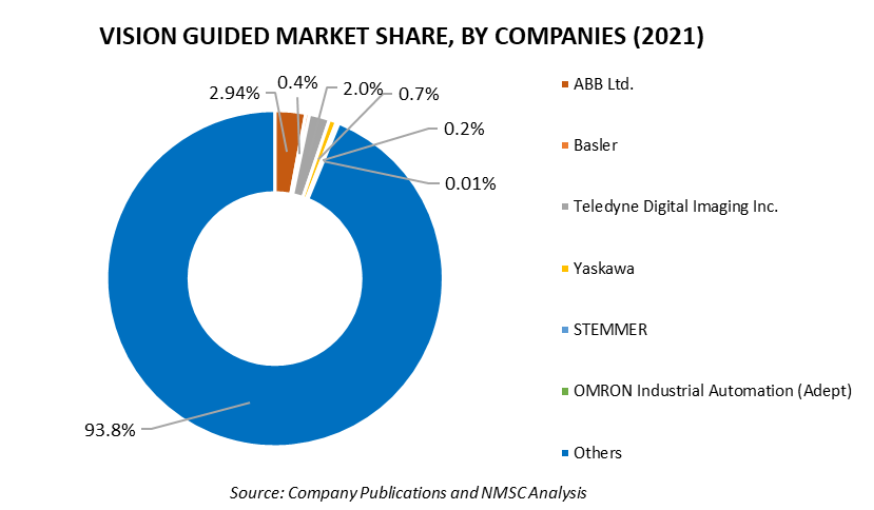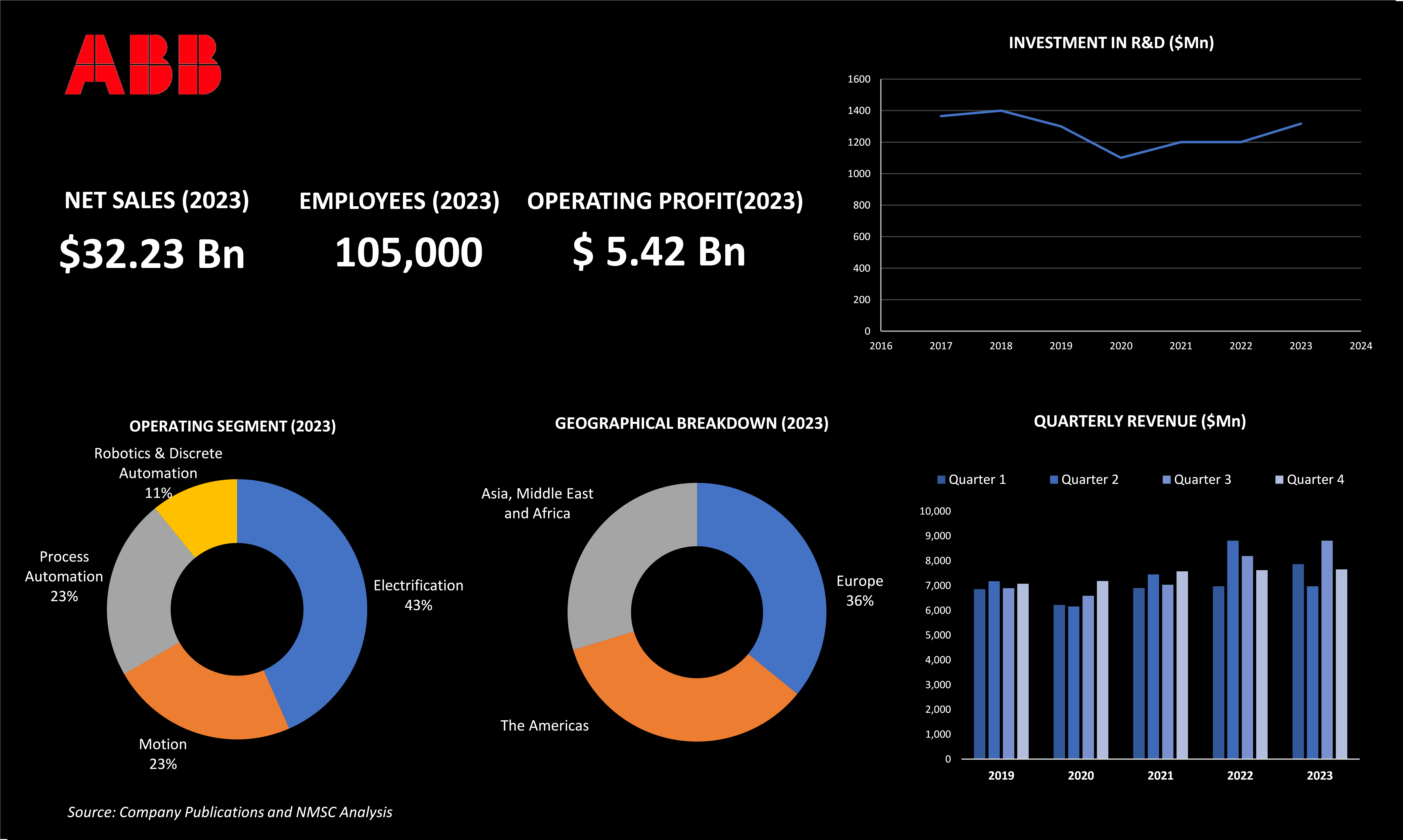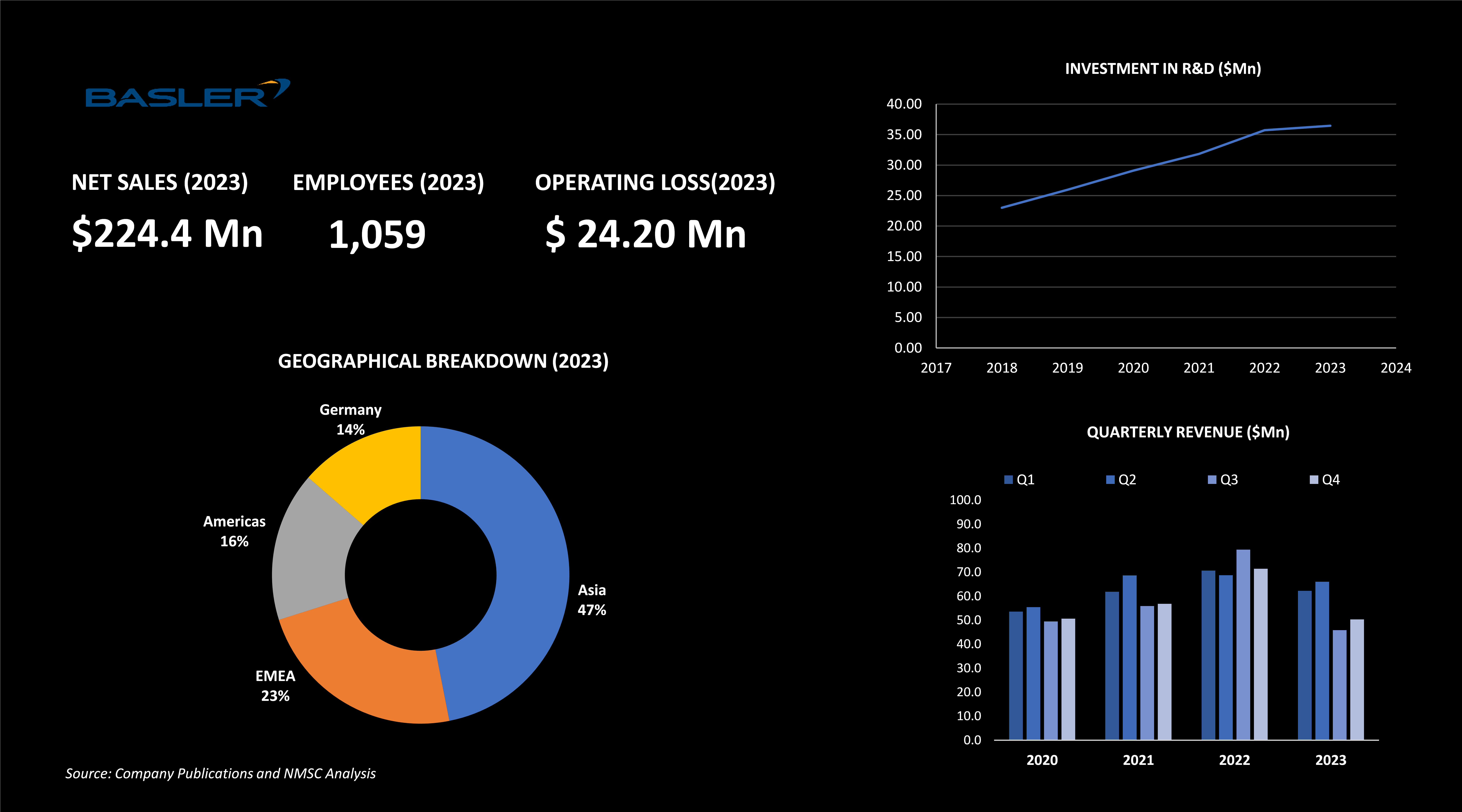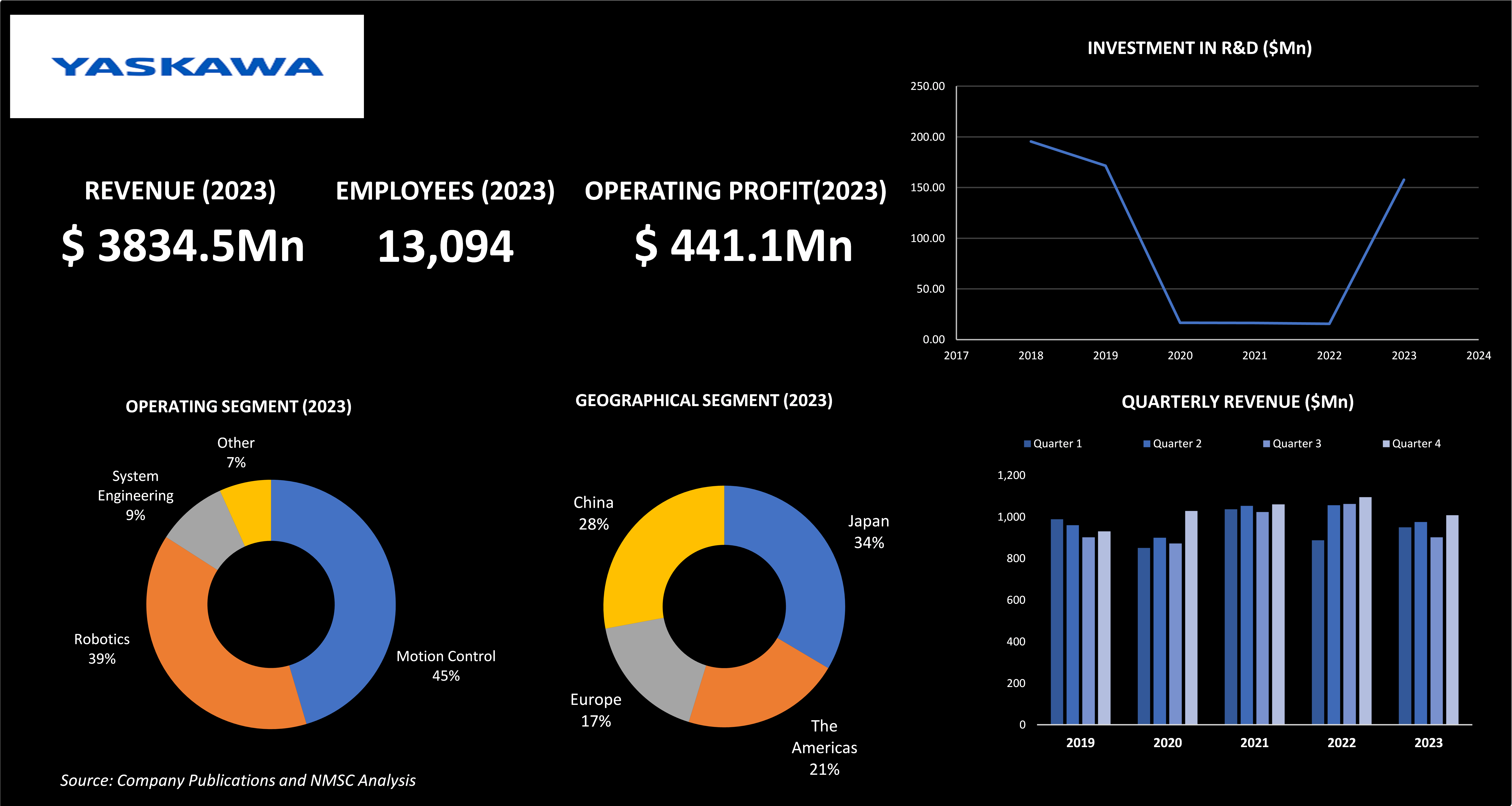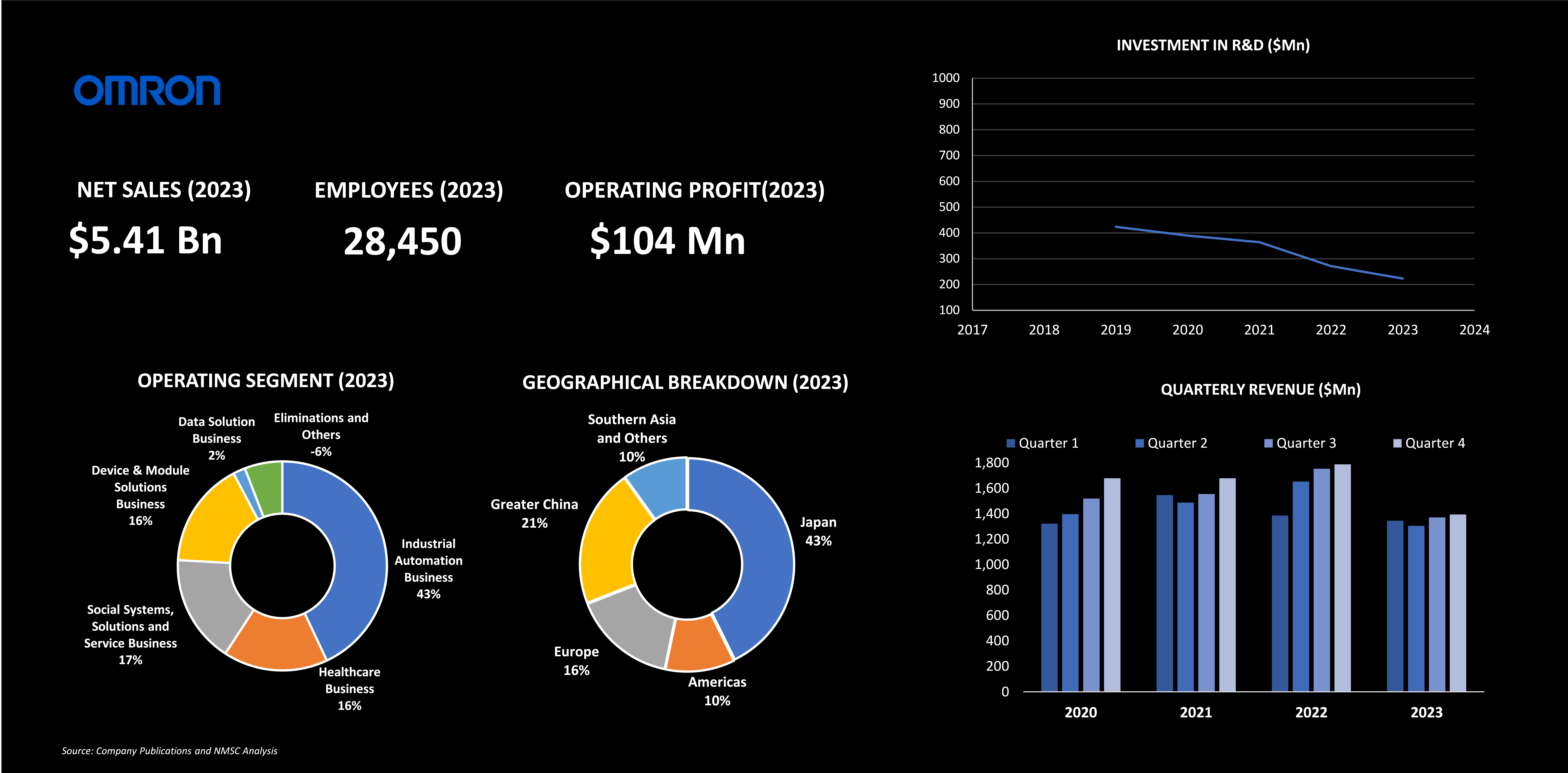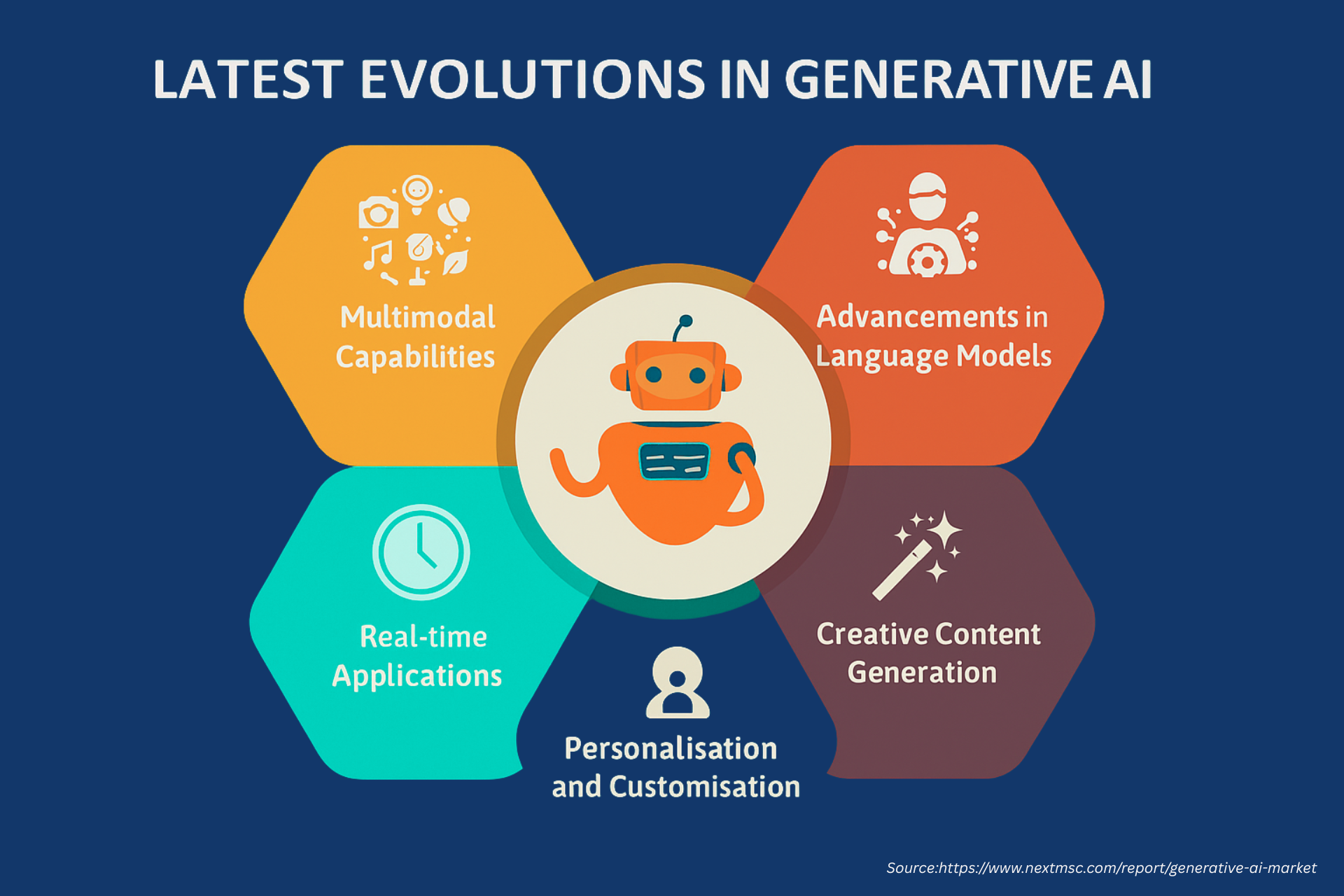How ABB, Basler, and Teledyne Lead Vision-Guided Robotics
25-Jun-2025
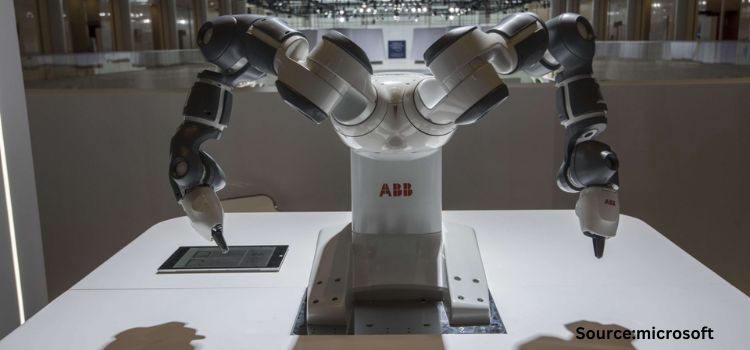
The Vision-Guided Robots Market is witnessing robust growth, with its value expected to surge from USD 7.76 billion in 2023 to USD 20.10 billion by 2030. This represents a significant close to tripling of the market growth, driven by a CAGR of 14.8% from 2024 to 2030. The expansion is fueled by the rising adoption of Industry 4.0 technologies and escalating labor costs globally, underscoring a strong upward trajectory for the market.
VISION GUIDED ROBOTS MARKET OVERVIEW
The vision-guided robots market is experiencing significant growth, driven by advancements in technology and shifting industry needs. Companies such as Omron Corporation, ABB Ltd., Yaskawa Electric Corporation, Basler AG, and Teledyne Digital Imaging are leading this transformation with their advanced imaging and sensor technologies. These robots, equipped with advanced imaging and sensor technologies, are transforming automation processes across various sectors including manufacturing and logistics. Their vision systems enable accurate object detection, quality control, and autonomous navigation, making them crucial for applications that demand high precision.
Technological advancements especially in artificial intelligence (AI) is greatly enhancing the capabilities of vision-guided robots. As AI enables these robots to better interpret visual data, make real-time decisions, and adapt to changing conditions. Additionally, the integration of Internet of Things (IoT) technologies is improving their operational efficiency. IoT connectivity allows vision-guided robots to communicate and share data seamlessly, facilitating real-time adjustments and comprehensive data analysis.
The market is also witnessing a trend towards sustainable practices. Companies are developing innovative solutions that boost productivity and also reduce environmental impact.
For the latest market share analysis and in-depth vision guided industry insights, you can reach out to us here
HIGHLIGHTS OF ABB LTD.
ABB Ltd, a global leader in automation and robotics, has made remarkable progress in advancing vision-guided robots. In 2023, ABB achieved substantial growth with revenue of USD 32.23 billion and an operating profit of USD 5.42 billion, reflecting a 9% increase from the previous year. This growth highlights ABB's strategic investments and expansions to meet the rising demand for advanced robotic solutions. In September 2022, ABB's shareholders approved the spin-off of its Turbocharging Division into an independent, publicly traded company, Accelleron Industries AG. This spin-off was completed on October 3, 2022, through the distribution of Accelleron common stock to ABB's stockholders. As a result, ABB distributed net assets of USD 272 million, which was reflected as a reduction in retained earnings.
As the vision-guided robot market expands, driven by increasing demand for automation and precision, ABB has made significant strides in advancing this technology. One notable example of this includes in 2023, ABB allocated USD 1.31 billion to research and development, representing 4.1% of its revenue. With approximately 7,500 R&D professionals across over 30 countries, about 55% are focused on digital and software development. This robust R&D investment has propelled ABB’s advancements in robot software technologies, particularly in vision-guided robots. ABB’s exploration of generative AI through over 100 projects includes developing robots with integrated vision systems to enhance their autonomy and safety.
Additionally, ABB's commitment to innovation is further demonstrated by its substantial investment of approximately USD 9.2 billion in R&D since 2016. This investment focuses on electrification and automation, helping ABB develop best-in-class products and services. The company’s advanced software solutions are a key differentiator, contributing significantly to the development of high-performance vision-guided robots. These robots are integral to improving operational efficiency and precision in various industries. ABB’s vision-guided robots, driven by cutting-edge technologies and strategic R&D efforts, exemplify the company’s leadership in enhancing automation and precision across diverse sectors.
HIGHLIGHTS OF BASLER AG
Basler AG stands as one of the key players in the vision-guided market, showcasing its influence with a reported revenue of USD 224.43 million in 2023. The company operates on a global scale, with a significant presence in key regions including Asia, EMEA, the Americas, and Germany. Among these, the Asia region emerges as a crucial contributor to Basler AG’s financial success, generating the largest share of its revenue with 47%. With a dedicated workforce of 1,059 employees, the company continues to drive forward despite facing challenges, including an operating loss of USD 24.20 million in 2023. This setback has not deterred Basler AG’s commitment to growth and innovation.
The company has strategically prioritized investment in research and development (R&D), recognizing the importance of staying ahead in a competitive market. In 2023, Basler AG allocated USD 36.47 million to R&D, a substantial increase from the USD 23.01 million invested in 2018. This significant rise in R&D spending highlights the company’s focus on adopting the latest technologies and enhancing product development. By channelling resources into innovation, Basler AG aims to reinforce its leadership in the vision-guided market and position itself for future growth. This proactive approach ensures that Basler AG remains at the forefront of industry advancements, continuing to deliver cutting-edge solutions to its global customer base.
HIGHLIGHTS OF TELEDYNE DIGITAL IMAGE
Teledyne Digital Image a subsidiary of Teledyne Technologies, is one of the prominent player in the vision-guided market, reporting net sales of USD 5.63 billion in 2023 and a net income of USD 885.7 million. The company has a strong global presence, operating across the U.S., Europe, Asia, and other regions, with the U.S. contributing 51% of its total revenue. Teledyne Digital Image operates in multiple segments, including digital imaging, instrumentation, aerospace and defense electronics, and engineered systems. Notably, the digital imaging segment is the company’s largest revenue generator, accounting for 56% of the total.
Teledyne Digital Image has made significant strides in the vision-guided robot market. For example, in 2023, the company's selling, general, and administrative expenses, including research and development, reached USD 365.8 million, up from USD 360.6 million in 2022. This increase reflects the company's ongoing commitment to innovation and technological advancement. Another key development includes the launch of the Black Hornet 4 by Teledyne FLIR, featuring advanced high-resolution sensors and thermal imagers. Additionally, the company invested USD 114.9 million in 2023 for the purchase of property, plant, and equipment, up from USD 92.6 million in 2022.
Teledyne Digital Image's ongoing investments in innovation and infrastructure, combined with its strong performance in the digital imaging segment, position the company as a leader in the vision-guided market, driving advancements in technology and maintaining its competitive edge.
HIGHLIGHTS OF YASKAWA ELECTRIC CORPORATION
Yaskawa Electric Corporation is one of the prominent players in the vision-guided robot market, with a notable presence in the automotive robotics sector. In 2023, the company reported revenue of USD 3.83 billion and an operating profit of USD 441.1 million. Yaskawa operates through three primary segments: motion control, robotics, and system engineering.
Despite challenges in the automotive market and ongoing inventory adjustments in the semiconductor and electronics sectors, Yaskawa achieved revenue growth. This growth was driven by heightened sales in painting-related projects for electric vehicles (EVs) in South Korea and significant investments in Europe and the U.S., aimed at automating and modernizing production to address rising labour costs and shortages. However, demand in major markets such as Japan, China, and Europe showed signs of stagnation. In Japan, reduced investment in the automotive and semiconductor industries led to diminished demand, while in China, initial strong demand in solar panel manufacturing slowed as the overall market recovery faltered. In Europe, the economic downturn resulted in a slowdown in manufacturing demand, despite ongoing investment in EV production.
This economic slowdown and stagnation in key markets like Japan and China are impacting Yaskawa's vision-guided robot sector. While regions with strong EV growth, such as South Korea and Europe, continue to drive demand for these advanced automation solutions, the broader expansion of vision-guided robots is being constrained by the reduced investments and slower market recovery in Japan, China, and Europe. This situation requires Yaskawa to strategically focus on regions with higher growth potential to sustain and expand its vision-guided robot market.
With the vision-guided robots market evolving rapidly due to increasing demand for precision and automation in manufacturing, Yaskawa emerged as one of the leaders in pushing technological boundaries. For instance, in November 2023, Yaskawa launched the Motoman Next series, an industry-first adaptive robot platform designed to tackle social issues through advanced automation. This innovative platform enhances flexibility and efficiency in automotive manufacturing, particularly for EVs, by integrating advanced adaptive capabilities and automation solutions. The Motoman Next series represents a significant leap in automotive robotics, reflecting Yaskawa’s commitment to driving innovation and addressing the evolving needs of the industry.
HIGHLIGHTS OF OMRON CORPORATION
Omron Corporation is one of the key leaders in automation and robotics, with a strong emphasis on advancing vision-guided robots. The company's dedication to innovation and technology drives its success across various sectors, including manufacturing, logistics, and healthcare. In 2023, Omron achieved revenue of USD 5.41 billion, supported by a workforce of over 28,450 employees. The Asia-Pacific region contributes the highest revenue, with Japan accounting for more than 40% of the total.
In recent years, Omron has seen a remarkable 112% increase in customers adopting its advanced automation solutions compared to the previous fiscal year. This surge in adoption highlights the growing market acceptance and satisfaction with Omron’s cutting-edge technologies. The company's focus on integrating AI and robotics into its vision-guided robots reflects its commitment to advancing digital transformation and enhancing operational efficiency.
In 2022, Omron made substantial investments to drive future growth and innovation. The company concentrated on developing new applications within its Industrial Automation Business, emphasizing the pivotal role of vision-guided robots. Omron also ramped up its marketing initiatives in the Healthcare Business and invested significantly in human resources to boost expertise in emerging technologies. Notably, Omron invested in 23 startups and entered into a strategic partnership with JMDC, acquiring a 33% stake in the company. This collaboration, which began in February 2022, aims to foster new value in healthcare solutions and accelerate digital transformation within the Omron Group.
Omron’s global reach is highlighted by its extensive sales network, spanning over 130 countries and regions and encompassing more than 160,000 sales channels—a substantial increase from fiscal 2015. Overall, Omron's strategic focus and significant investments in vision-guided robots highlight its leadership in automation and robotics, driving growth through cutting-edge technologies and effective business strategies.
Have questions? Inquire before purchasing the full report
About the Author
 Sukanya Dey is a passionate and insightful writer with over three years of experience, she excels in providing clients with in-depth research and valuable insights, helping them navigate complex business challenges. She has a keen interest in various industries, including Robotics, Manufacturing, Automotive, and ICT & Media. Sukanya strives to offer fresh perspectives and innovative solutions through her comprehensive research. She finds immense joy in weaving her thoughts and ideas into captivating articles and blogs, where her passion for literature and art shines through. In her free time, she enjoys reading books, cooking, filming, often drawing inspiration from these activities for her creative writing endeavours. The author can be reached at [email protected]
Sukanya Dey is a passionate and insightful writer with over three years of experience, she excels in providing clients with in-depth research and valuable insights, helping them navigate complex business challenges. She has a keen interest in various industries, including Robotics, Manufacturing, Automotive, and ICT & Media. Sukanya strives to offer fresh perspectives and innovative solutions through her comprehensive research. She finds immense joy in weaving her thoughts and ideas into captivating articles and blogs, where her passion for literature and art shines through. In her free time, she enjoys reading books, cooking, filming, often drawing inspiration from these activities for her creative writing endeavours. The author can be reached at [email protected]
Add Comment
Related Blogs
Latest Evolutions in Generative AI: Multimodal, Real-Time, and Beyond
Generative artificial intelligence (GenAI) employs advanced...
How Generative Artificial Intelligence is Making Voice Assistants Smarter and More Human-Like
Introduction The Voice Assistant Market is undergoing a s...
Voices of the Future: How Tech Giants are Shaping the Voice Assistant Market
Next Move Strategy Consulting forecasts the Voice Assistant...




